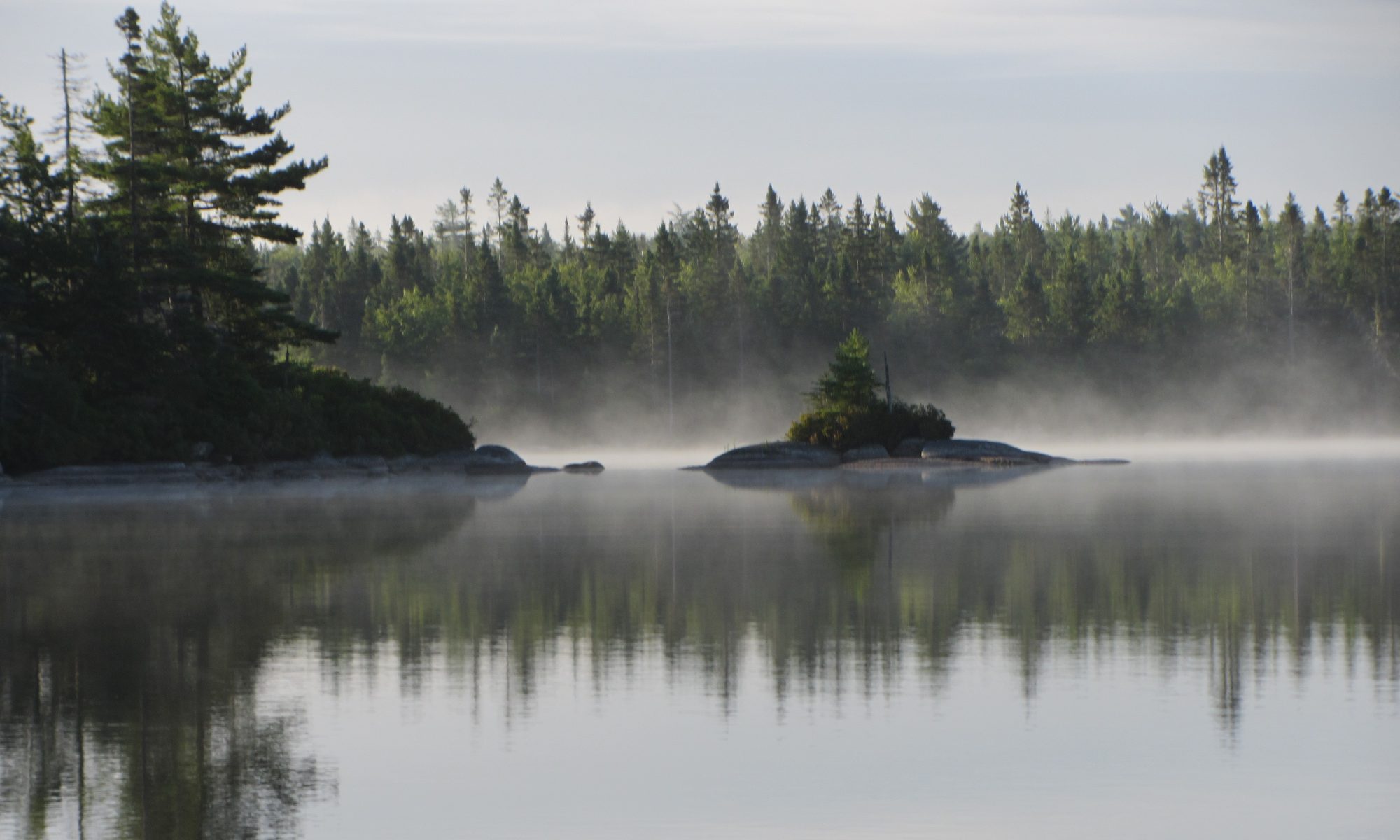On 21 August 2016, with the approval of Nova Scotia Environment (NSE), the Woodens River Watershed Environmental Organization (WRWEO) designated three sites on the Bluff Wilderness Hiking Trail as “NSE Approved Leave No Trace (LNT) Educational Camping Sites” and posted the follow signs at each site:
One reason why these three sites are called “educational” is because they cannot be considered examples of “ideal” LNT camping sites. For example, by placing the signs to notify hikers of the designation we have already “left a trace” and undermined the very principles we are seeking to promote. Similarly, ideal LNT camp sites would not be located directly on an established hiking trail. However, all three of the NSE Approved LNT Educational Camping Sites are located along the Bluff trail. Two are found on the north leg of the Mi’kmaq Hill Loop (formerly the Indian Hill Loop) not far from Frederick Lake and the intersection with the Bluff Loop. The third is located on the cross section of the Bluff Loop. Moreover, even as these sites were selected as LNT Educational Sites, each was already marked with evidence of harmful human impacts which should not be apparent at any LNT camp site.
All three sites are located on flat rock surfaces. In that sense each offers an excellent example of a “durable surface” suitable to pitch a tent. However, lichen and mosses have already been crushed, killed, or scrapped off the rocks in these locations. Similarly, a number of spots on these rocks bear the signs of camp fires and some of the nearby trees have been limbed or cut to supply bows to sleep on or as fuel for fires. These are all signs of how NOT to practice LNT camping and serve as a very poor example of the ideal LNT camp site.
These sites are not areas which have suffered the worst examples of harmful human impacts from people camping on the Bluff Trail. There are at least two sites on the Mi’kmaq Hill Loop which bear considerably more damage from campers and campfires. Both of these sites have more than twenty trees cut down, they have trees that have been limbed and hacked, they have damage to the soil layers from poorly placed, poorly managed, and far too large campfires. These sites also bear the signs of fire damage to the tree canopy from these same campfires.
It is because of the damage being done in this protected wilderness area that WRWEO has undertaken to improve LNT practices among trail users. If there is not a noticeable reduction in the harmful human impacts on the trail it may be necessary to prohibit camping all together. WRWEO hopes that the users of the Bluff Trail will be inspired to take better care of the space that heals them and help ensure that people can continue to enjoy hiking and camping in this protected wilderness area.
The coordinates of the NSE Approved Leave No Trace (LNT) Educational Camping Sites are:
Coyote/U’lukwej Site: Latitude 44.64224, Longitude -63.78316
Crow/Ka’qaquj Site: Latitude 44.64116, Longitude -63.78411
Squirrel/Atutu’wej Site: Latitude 44.63094, Longitude -63.7953
Moose/Tia’m Site: Latitude 44.63124, longitude -63.81186
Link to Map showing NSE Approved Educational LNT Campsites.
WRWEO continues to discourage camping on the Bluff; however, if you wish to camp anyway, PLEASE ensure that your are familiar with proper LNT principles and practices. If you have not recently trained in LNT practices visit the Leave No Trace Canada website.


One Reply to “NSE Approved Leave No Trace (LNT) Educational Camping Sites”